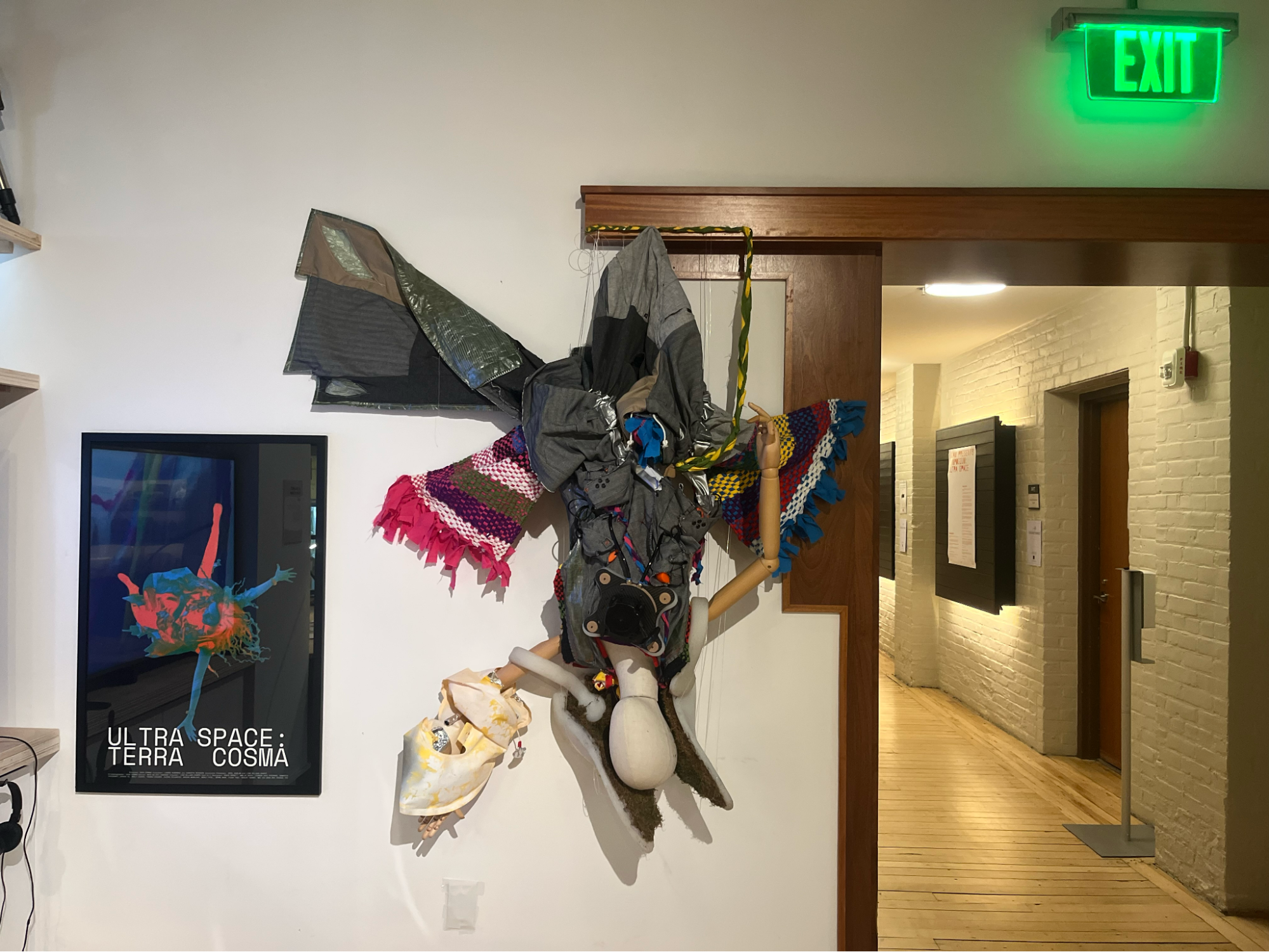CCAM kicks off two-day symposium, “Ultra Space”
The symposium examines the relationship between space, design and the human body, according to organizers.

Bryan Ventura, Contributing Photographer
Yale’s Center for Collaborative Arts & Media commenced its two-day spring 2023 symposium, “Ultra Space,” on April 27.
The symposium is designed to bring together artists, scientists and scholars to examine the intricate relationship between space, design and the human body, according to organizers. The event pays tribute to the pioneering ideas of artists-turned-architects Shusaku Arakawa and Madeline Gins, who advocated for the potential of architecture to extend human life.
Drawing inspiration from their work, the Ultra Space symposium will delve into the relationship between design and the human body across various mediums, including live performance, visual art and sound design.
“The Ultra Space Symposium emerged as an amalgamation of 3 plus years of Ultra Space research & explorations through coursework, exhibitions and workshops at CCAM,” said CCAM director Dana Karwas. “The goal of the Ultra Space symposium is to build and engage an interdisciplinary community and make this dialogue more impactful & accessible across Yale and beyond.”
The symposium features interdisciplinary conversations, panel discussions and hands-on workshops that delve into topics such as living in space, technosignatures on other planets and the potential of architectural volumes for the body in a weightless environment.
The symposium is accompanied by a multidisciplinary exhibition that showcases artwork from contributors, works from Arakawa and Gins, a collection of short films and the immersive virtual reality experience “Echoes of Silence,” created by Emmy Award-winning artist Tamara Shogaolu.
Aleksa Milojevic ARCH ’23 and Amelia Gates ARCH ’24, student researchers for Ultra Space, contributed an exhibition centering on an amulet they designed for the symposium.
“We try to envision the functionality a design should have, and sentimentality it should convene in order to be a feasible object of cultural value for the next major frontier crossing and exploration,” Milojevic said.
Gates offered further details on how their artifact came to be, mentioning that it involved a comprehensive investigation of moments in everyday life.
“The design process was accompanied by a documentation of precedents from everyday life, which address the idea of collective or individual memory,” added Gates.
The first day of the event had guests engage with activities including presentations on the “Ultra Space” printed volume and a live performance of Liam Bellam Sharpe MFA ’19’s multi-modal semi-opera “Latency.”
The second day brings discussions such as “Body/Cyborg/Alien? Embodying What’s Out There,” which will delve into the complexities of discovering alien life, and “What Do You See?”, a panel where only two of the five panelists are familiar with the featured artwork beforehand.
Attending guests can also immerse themselves in hands-on workshops such as “Manipulations,” which investigates the offsets between perceived space and projected space, and “Performance Rituals for Bodies in Space,” which explores the potential of architectural volumes for the body in the environment of weightlessness.
Lauren Dubowski, assistant director of CCAM, emphasizes the value of the interdisciplinary nature of the symposium. She explains that the event embodies the core principles of CCAM.
“Our interdisciplinary symposium model speaks to, and in a way, expresses CCAM as a whole,” said Dubowski. “With the ‘Ultra Space’ symposium, the work of the artists Arakawa and Gins has anchored the work our team members and many collaborators, who come from a wide range of creative backgrounds, are creating, supporting and sharing through these discussions, presentations, performances and more.”
Karwas believes that the “Ultra Space” symposium delves into crucial themes that have emerged following years of isolation and reduced connections due to the pandemic, including the activation of the body and connections between bodies. In addition, the interplay of technology and space is particularly relevant in today’s global landscape, according to Karwas.
“The current tech, AI, and space industries are in a competitive landscape moving at lightspeed, and right now, we all need to consider the body and ethics and people,” Karwas told the News.
The symposium will continue through Friday, April 28 at the Center for Collaborative Arts and Media on 149 York St.







